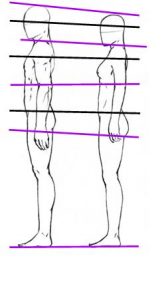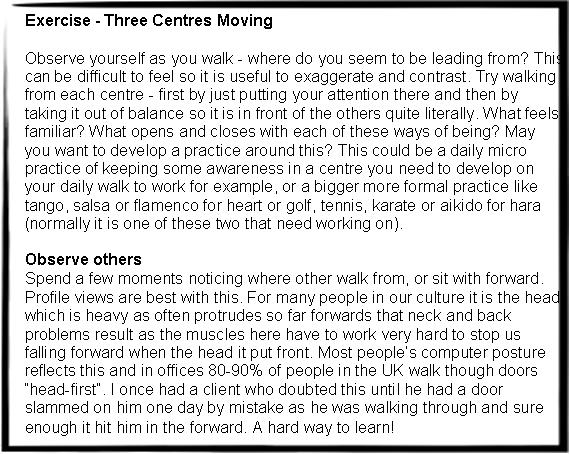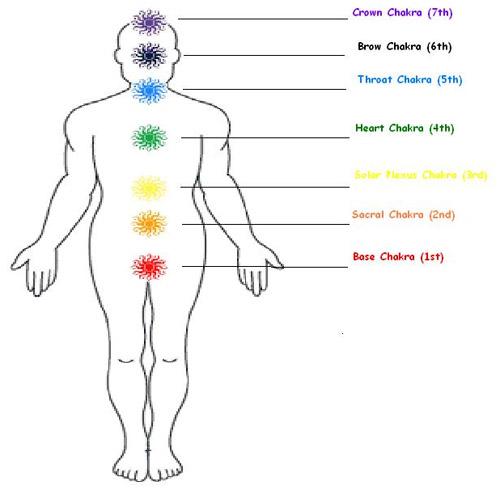The fifth chapter from my upcoming book – The Body and Leadership
Flavours of human and the groves you’re already dancing to
In this chapter we’ll develop out embodied tool kit further, introduce rhythms and describe some types of people and what their posture and movements are like.
Multiple Centres?
In chapter four we learnt to get ourselves together through centring. We focused on the physical centre of mass below the navel and exercises which got us in touch
with this area. While there is only one bodily centre of gravity in the physical sense, we can also think about multiple “centres”. We can function “from” these bothliterally in the physical sense – orientating and leading the body’s movement with them – and metaphorically. Different systems use different numbers of centres ranging from three which I will use here for simplicity to complex chakra systems with many more centres, some of which may even be outside the body. Here are the three basic ones – head, heart and hara (Japanese for the physical belly centre). In business you may also hear of “head, heart and hands” expressing the cognitive (thinking as is normally considered), emotional and practical doing aspects of any activity.
The functions of the three centres is as one might expect. The head concerns thinking, the heart emotion and interpersonal connection and the hara movement and action.
Any leader needs to employ all three centres in their work. A leaders needs to be smart, caring and powerful to be effective. Any leadership virtue involves use of all the centres however is primarily associated with one centre. Any centre can also “take over” as pathological concerns develop and it gets out of balance. We all have our own favourite habitual ways of operating – the three can in fact be used as a simple typology as while we are all capable of leading from all three in different circumstances, we have a characteristic pattern. As ever balance and range is the key to leadership effectiveness.


Diaphragms
A three dimensional way of considering the 2D “central line” that connect the centres (and is critical for relaxation as we learnt in chapter four) is in terms of “diaphragms”. These are the internal muscular domes of the throat, chest-cavity respiratory diaphragm and pelvic floor; and the top of the head and soles of the feet – our vertical outer surfaces. The internal diaphragms (approx. positions show with purple lines) are the divisions between the body areas associated with the three centres (black lines) uses here and when combined correlate to many more complex chakra systems – e.g. the throat diaphragm/centre/ mediates between the head and the heart centres and can be a block between them. I experience the body as having string symbolic meaning in regard to these maps and do not see the necessity for postulating magic-pseudo-anatomical “energy” structures, though visualising such things can be helpful.
This section has been influenced by Stuart Heller, Wendy Palmer, Dr Richard Strozzi-Heckler and my colleague The Reverend Francis Briers





Sample cv
Great pleasure in discovering this blog!The saviour of the world. Thank you for your treatment of this wonderful subject. thanks for all the chakras! I actually came here for good resumes and thanks to Google for connecting me here!@bose
Mark Walsh
you’re very welcome 🙂